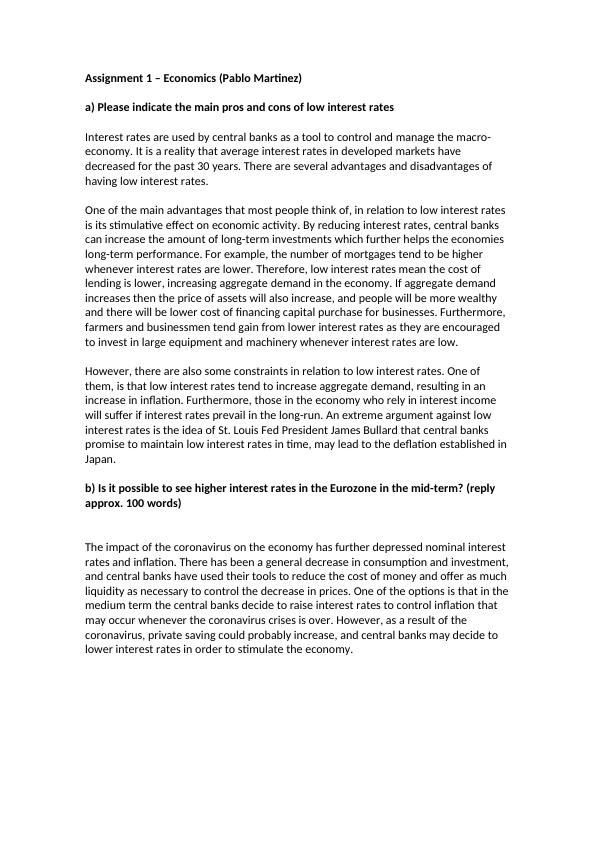Ask a question from expert
Low Interest Rates - PDF
2 Pages449 Words50 Views
Added on 2020-11-30
Low Interest Rates - PDF
Added on 2020-11-30
BookmarkShareRelated Documents
End of preview
Want to access all the pages? Upload your documents or become a member.
Macroeconomics: Demand-Pull and Cost-Push Inflation, Keynesian-Monetarist Controversy, Impact on AD-AS, Banks and Money Creation
|11
|1471
|471
The effect of Fiscal Policy Assignment Solution
|13
|3716
|213
Effect of Decreased Interest Rate on the Macro Economy
|7
|1472
|453
Macroeconomics
|10
|1843
|244
The Reasons Behind RBA's Inflation Targeting: A Comprehensive Overview
|4
|672
|152
ECONOMICS FOR MANAGER Name OF THE Student Name of the University Authors
|12
|2077
|173
